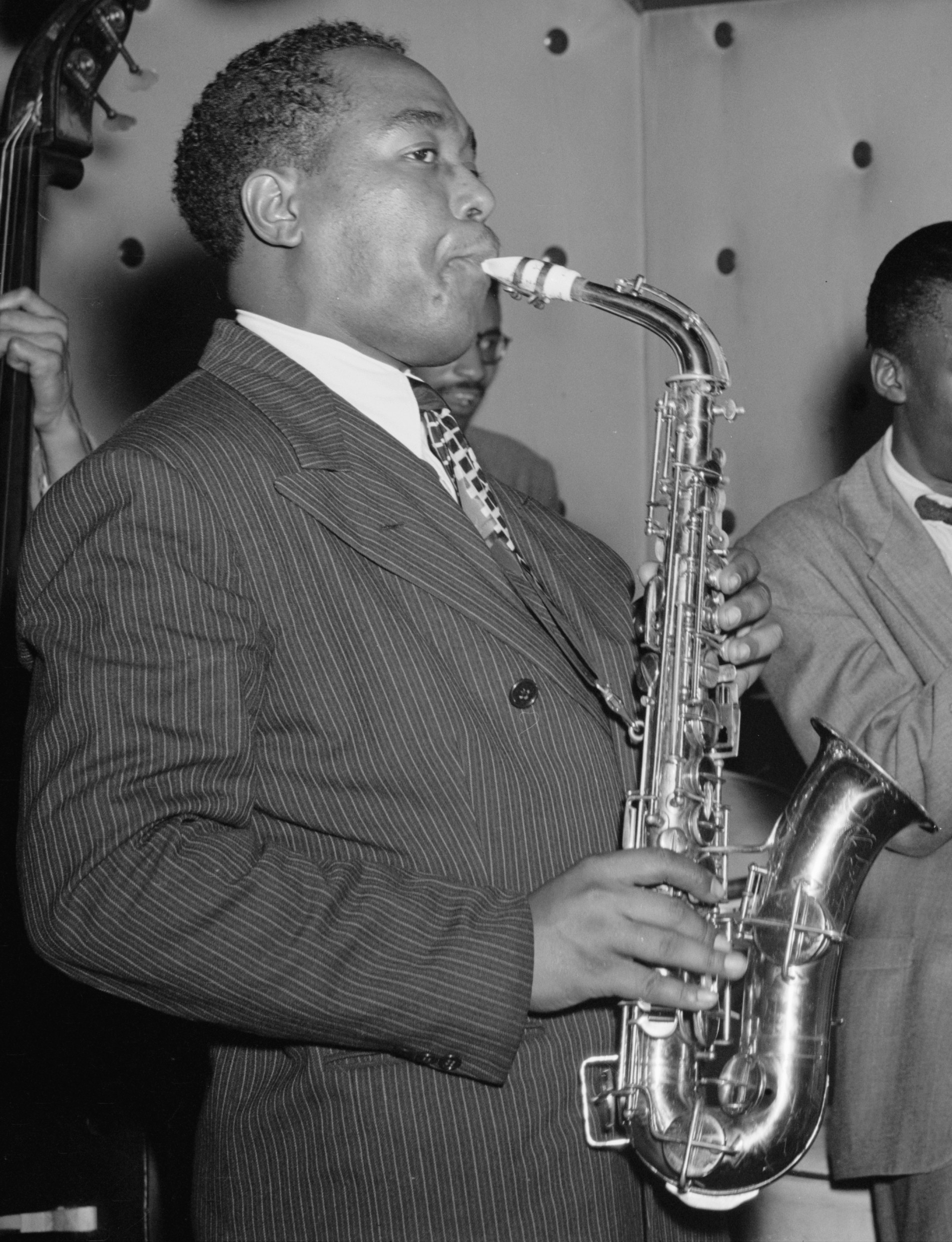 Charlie "Bird" Parker William P. Gottlieb / Public domain via Wikimedia |
Charlie Christopher "Bird" Parker was born in 1920. When he was little his family moved to Kansas City, Missouri, where he would get his first taste of jazz and blues. His first time hearing the music was at school. In high school he played baritone horn in the band. When he was fifteen he showed a great interest in music and a love for the alto saxophone. Parker would soon be playing with local bands in small clubs until 1935, when he left school to pursue a career.
Charlie Parker found happiness with his wife and child, whom he loved, and with his music, which meant the world to him. I admire how "The Bird" showed he cared about people. He used to take requests at big fancy shows (he was the first to do that). To me, this makes him a great man, and I wish I could have met him.
 Charlie Parker Unknown author / Public domain via Wikimedia |
Charlie Parker died March 12, 1955, in New York, but his music and his memory live on forever.
Page created on 8/23/2013 12:16:13 PM
Last edited 7/3/2025 5:40:03 PM
Charlie Parker had a volatile and highly controversial relationship with fellow jazz great Dizzy Gillespie. Despite their differences, together they formed one of the most revered collaborations in jazz history.
Our thanks to the "Bird and Diz" Web site for the information provided below.
As if by spontaneous combustion, a number of startling recordings appeared in 1945 and early 1946 on an array of obscure labels. Chief among them were several pieces by Charlie Parker and Dizzy Gillespie that would define a new kind of jazz and serve as a cannon for the modern era--"Groovin' High," "Dizzy Atmosphere," "Salt Peanuts," "Shaw Nuff," "Hot House," "Anthropology," "Koko," "Ornithology," and "A Night in Tunisia." This explosive new music had in fact been taking shape over the previous six or seven years.
Parker and Gillespie first met in 1940, and thus began one of the great collaborations of the twentieth century. During the early forties, Parker was employed by Jay McShann, and Gillespie worked for Cab Calloway, Ella Fitzgerald, Coleman Hawkins, Benny Carter and Charlie Barnet, among others. Parker and Gillespie first worked together in the Earl Hines big band in 1943, and the next year were reunited in Billy Eckstine's legendary big band outfit.
The golden period was from January 1945 to January 1946, when they frequently performed together in New York nightclubs and on recordings, and then took their music to the West Coast for an eight week engagement at Billy Berg's, a Hollywood nightclub.
The Berg job ended on January 4,1946, and Parker failed to appear at the airport for the return trip east. Gillespie started working in New York, organizing a big band that he would lead until 1950.
Parker remained in Los Angeles and became mentally unstable. His problems culminated in a nervous breakdown coupled with heroin and alcohol abuse, which led to a six-month confinement at Camarillo State Hospital. Parker was released from Camarillo in late January 1947 and returned to New York on April 4.
The next evening he visited the Savoy Ballroom and sat in with Gillespie's big band. In the years that followed, Parker and Gillespie made music together again--some of it very fine music indeed -- but the remaining occasions were ad hoc, and their relationship, always bound by a loving, mutual respect, was sometimes fractious.
